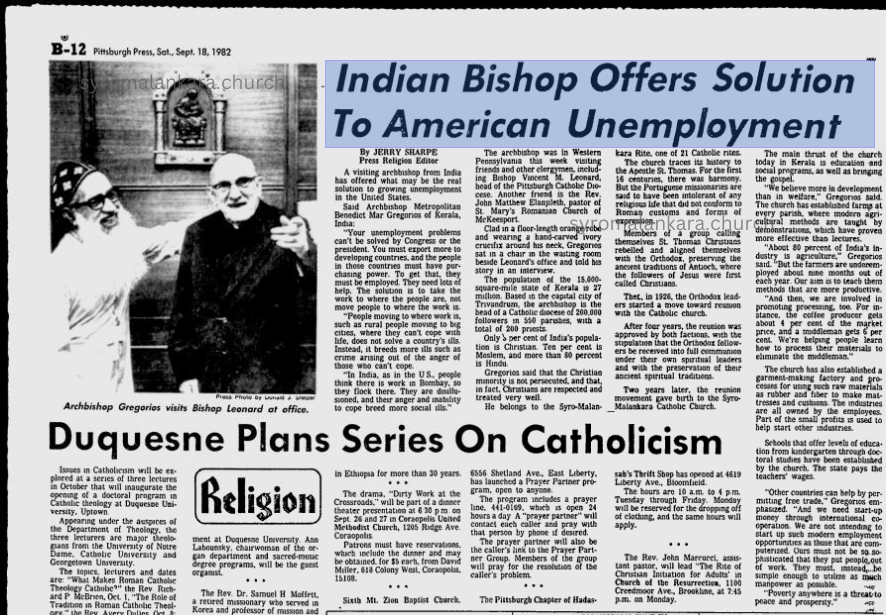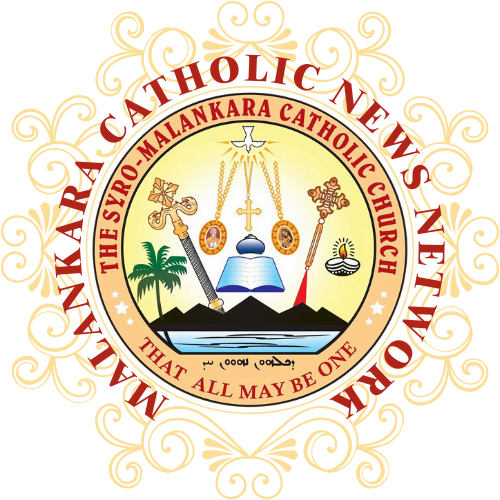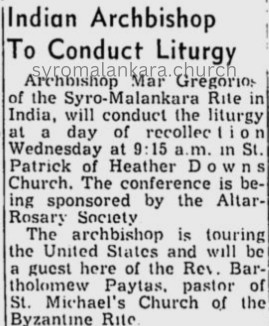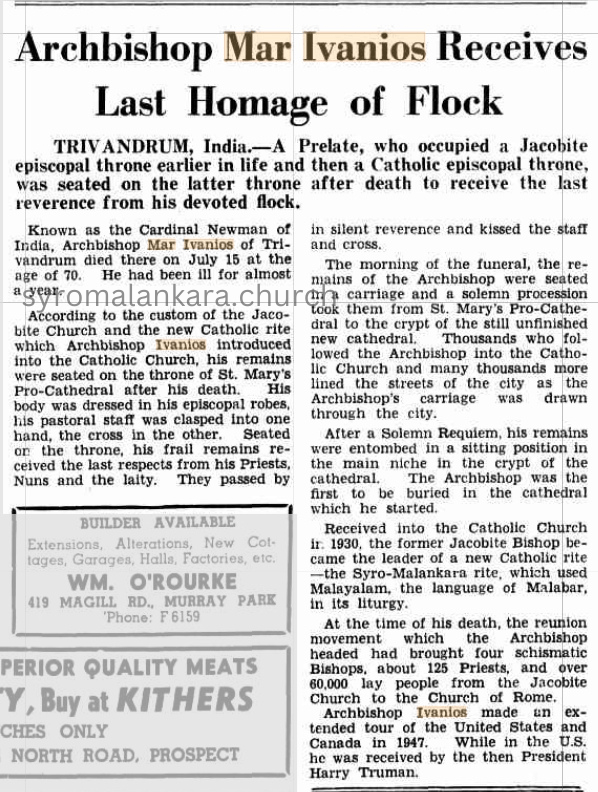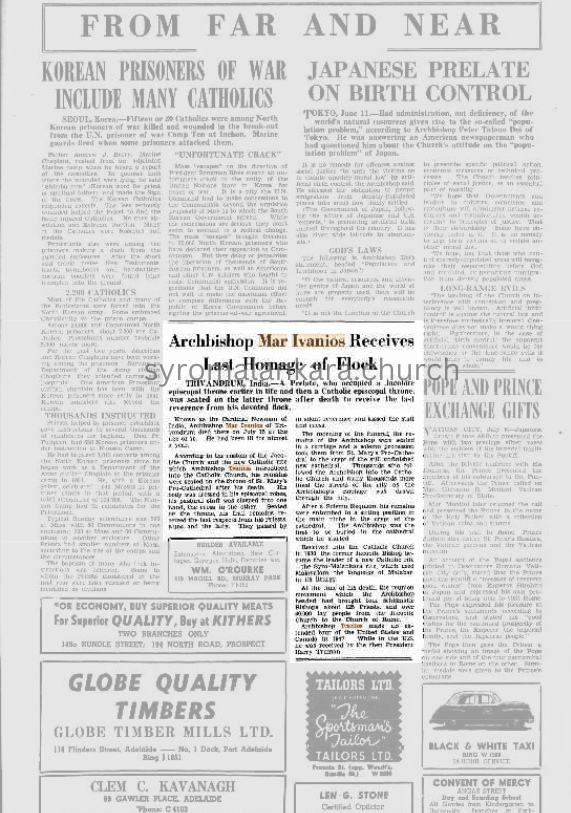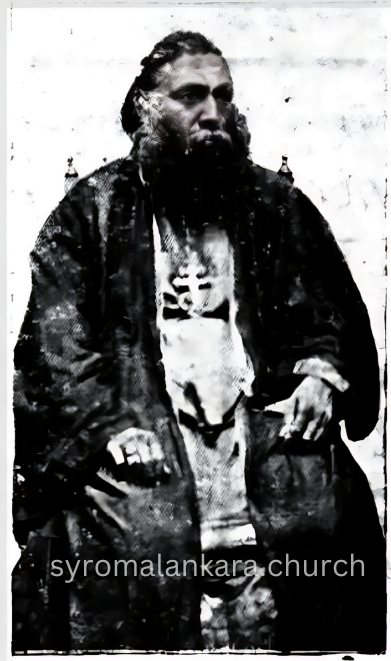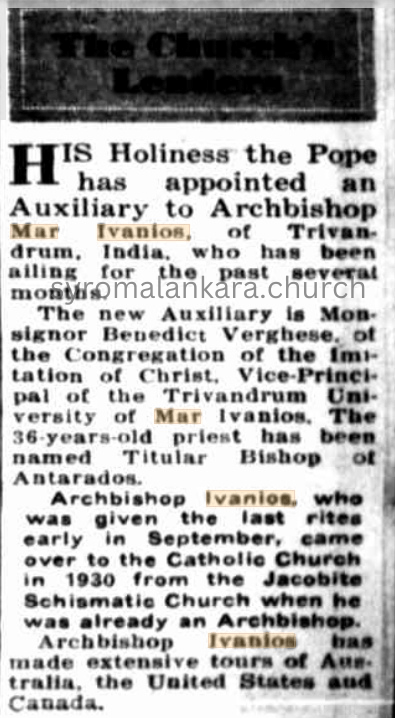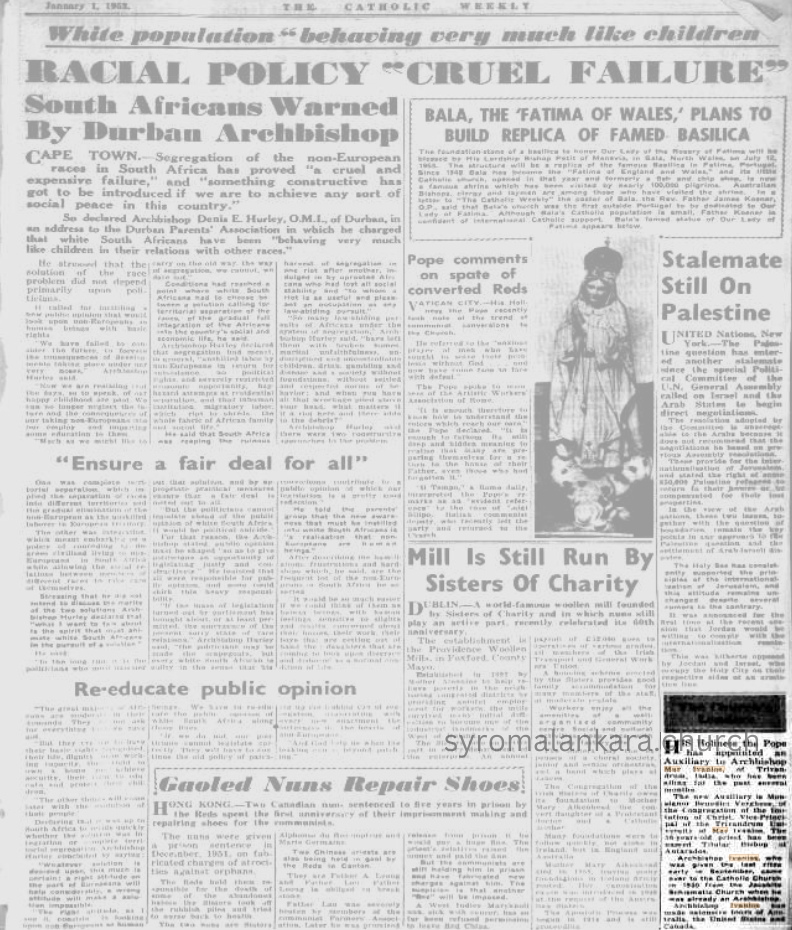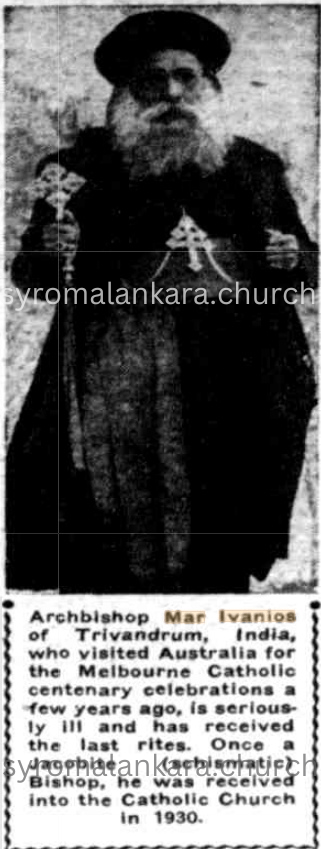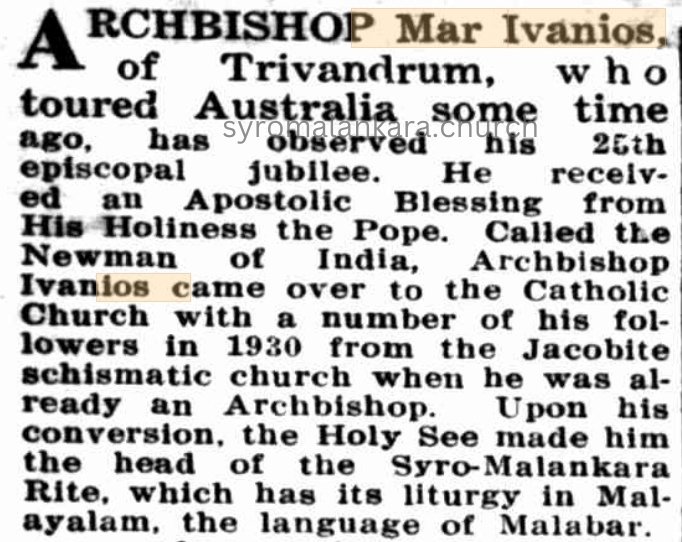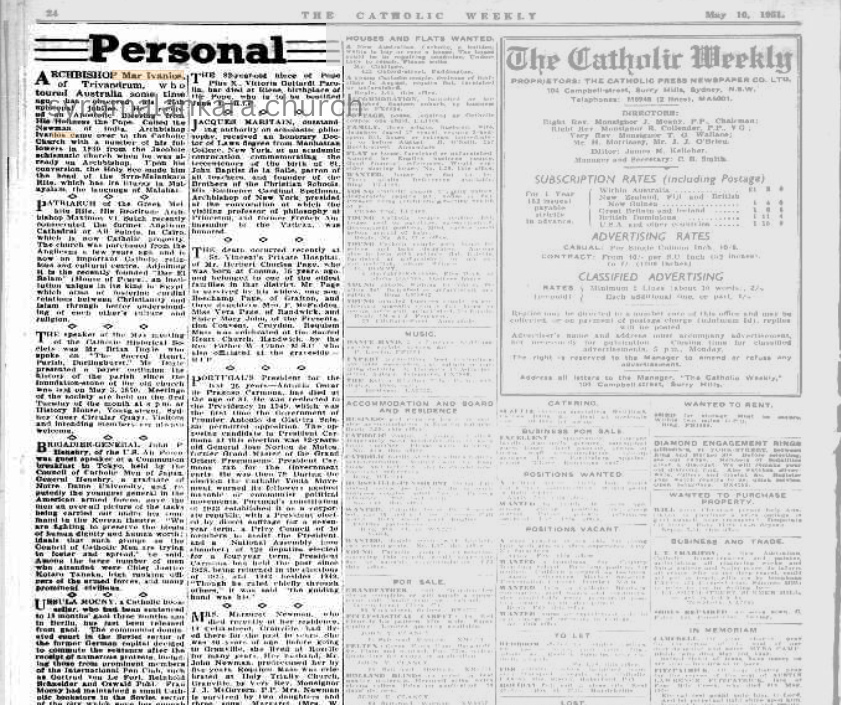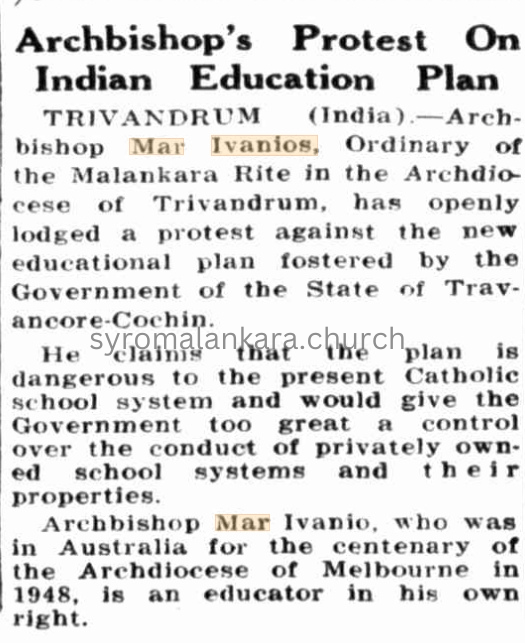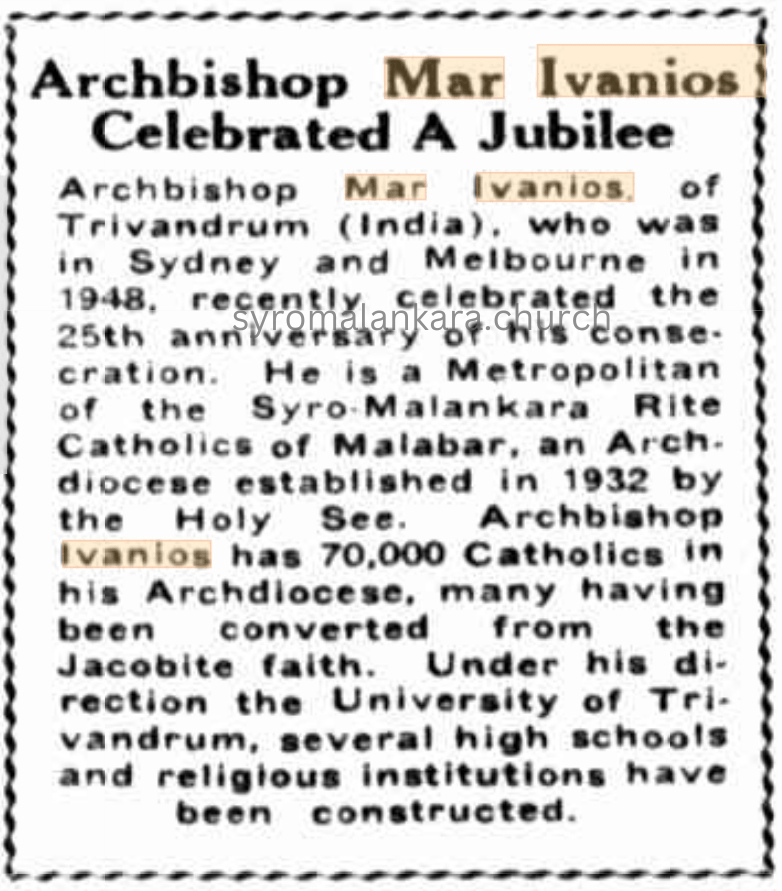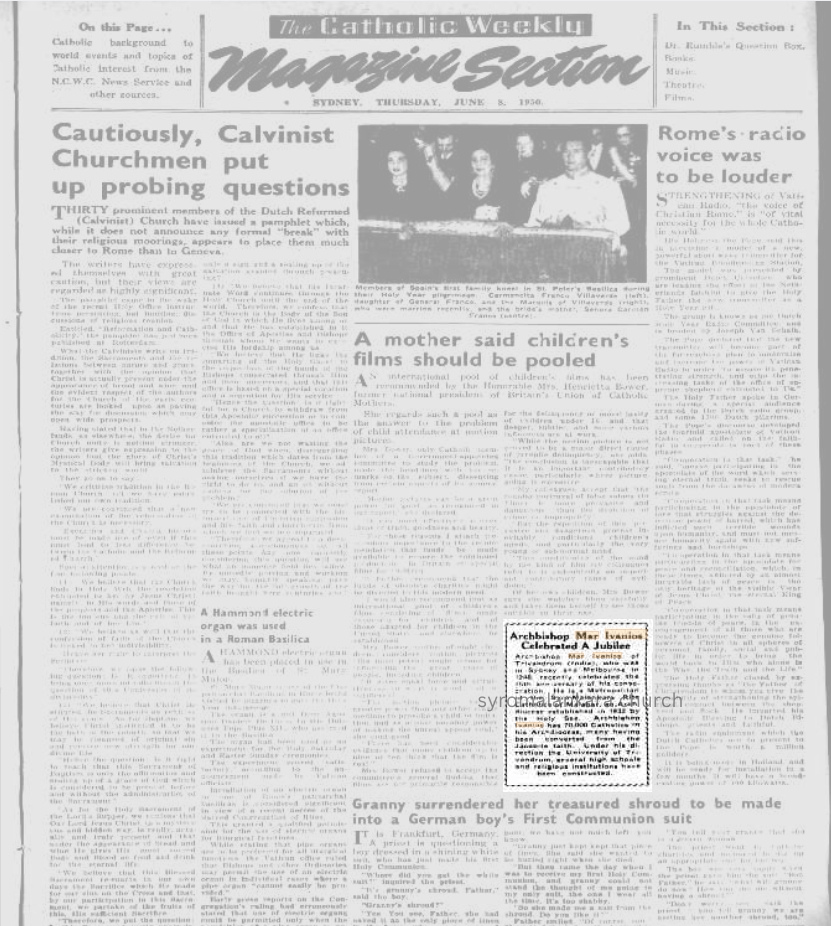To the Bishops of the Malankara Catholic Church
On this solemn occasion my heart is filled with joy in the Lord. For it is with deep gladness that we are commemorating 20 September 1930 as a day of grace when, in the presence of Bishop Aloysius Maria Benziger, specially deputed by the Holy See, Mar Ivanios, Mar Theophilos and some followers proclaimed their Catholic faith – a faith which they sought to nourish in prayer and study under the guidance of the Holy Spirit, the Spirit of unity and love, the Spirit of peace and joy.
This Spirit of Christ had long before mysteriously filled their hearts, awakening in them a feeling and a concern for unity. It was indeed the Holy Spirit working deep inside men, in their spiritual life, and then transforming from within the history of earthly events that led the two Syro-Antiochene prelates towards unity, which expresses the fullness of charity and facilitates a greater openness to the outpouring of the gifts of the sanctifying Spirit, who renews all, unites all and vivifies all.
Bethany is a name rich in significance for the history of the Syro-Malankara Church. It indicates, we may say, an intimacy with Christ in listening to his word and meditating on it; it indicates a fervent openess to grace and a awaiting with faith and hope the manifestation of God’s will after a period of profound spiritual maturing. It is good to emphasize that the event we are commemorating was, above all else, the result of being securely anchored in God through contemplation, in an exceptional climate of asceticism.
In this prayerful dialogue with God, Mar Ivanios and Mar Theophilos realized that only through deep communion with the Lord could they know his will and have the strength to follow it. In the spirit of the great ascetics of the ancient Syrian tradition, through study of the great Eastern Fathers, in particular Saint Basil the Great, and in a poverty enriched only by immense love for God and his Church, they yielded themselves willingly to the transforming action of the Spirit, confident that the Lord is faithful and never disappoints the hopes placed in him. If their subsequent dialogue with the Catholic Church and especially with certain Bishops proceeded easily and serenely, this was because it was an echo of their prayerful conversation with the Lord.
The event we are commemorating was thus characteristically a spiritual event. It was a decision suggested and sustained not by factors of sociological theory or practice, but by an action which was derived from the Spirit who pours love into our hearts and was aimed at seeing love manifested in unity as desired by Jesus. What he asked for in his great priestly prayer was the unity of all those who believe in him, and that this unity should be an image of the unity between himself and the Father in the love of the Holy Spirit, “that the world may believe”.
Your spiritual fathers placed themselves by faith in contact with the Spirit of Jesus. They listened to him. They followed him. Their unity with Rome was the result of their communion with the Spirit of Christ. This too was an actualization of what cannot fail to be at the heart of “the imitation of Christ”: namely, following the Spirit as the firstborn Son followed him. “For all who are led by the Spirit of God are sons of God”.
In this moment of remembrance, with the same affection with which Pius XI on 4 May 1932 greeted “his most dear Mar Ivanios” I now salute the whole Malankara Church, a favoured part of the Church in India, that India which, as Mar Ivanios himself saw, offers such riches to the faith through its culture. This culture, with its ancient spiritual traditions, so ready to respect others and accept them, helps us to understand and really live the ecumenism of prayer, study and work for the unity of all who believe in Christ and have one faith, one baptism and one hope.
I am very pleased with the theme chosen for the jubilee celebrations, which is in itself a programme for action: “That all may be perfected in unity”. The theme is in tune with the Church’s concern for unity. You well know what the Second Vatican Council says: “The restoration of unity among all Christians is one of the principal aims of the Second Vatican Council” and “all Christians, Eastern and Western, are earnestly asked to offer frequent, or rather daily, prayers that, with the help of the most holy Mother of God, all may be made one”. Speaking even more directly to you of the Eastern Churches, the Council solemnly said: “Eastern Churches which are in communion with the Apostolic See, have a special duty to encourage the unity of all Christians, especially those of the East. The principles to which they must adhere have been laid down by this Council in its decree on ecumenism. They must make use principally of prayer, the example of their lives, loyalty and devotion to the ancient traditions of the East, improved mutual understanding, collaboration and a fraternal appreciation of acts and intentions”.
Looking at your Malankara Church, so open to the Spirit, so flourishing in good works, I cannot forget to thank those who, following in the steps of Mar Ivanios and Mar Theophilos, have laboured so devotedly that this Church may be increasingly “holy and without blemish”, resplendent with those deeds of apostolic sanctity which make it mirror the true face of Christ in the world. I know the zeal and dedication of its pastors both from their quinquennial reports and from my personal meetings with them during their ad limina visit this year. I know the generous work of the priests and the zealous contribution by the men and women religious (so dear to the heart of their founder Mar Ivanios) through their life of prayer and apostolic work; I know the self-denying collaboration offered by a laity increasingly aware of the mystery of the Church, both universal and local, and of its problems.
To all I extend my greeting, my prayers and my exhortation to live increasingly that unity which springs from the Spirit of Christ and draws energy and strength from a life of deep contemplative prayer, pressing on with generous commitment to the goal to which we all aspire: “that all may be one”.
As a sign of my particular sharing in so happy an anniversary and, as it were, to set a seal on the solemn ceremonies that you have arranged, I am sending as my representative His Eminence Cardinal Wadysaw Rubin, Prefect of the Sacred Congregation for the Eastern Churches, to honour your celebrations and encourage your efforts towards actualizing “truth in love” (“veritatem facientes in caritate”).
Invoking the blessing of God on you, venerable Brothers, and on your Church so full of fervour, I commend you to the protection of the holy Mother of God, the mother of unity and charity. May she bind you ever more strongly together in God, give you more and more the sense of communion with the whole Church and be for you a source of joy and a bond of peace. Further, using a form of words familiar to you, may my blessing descend, plentiful and propitious, on all your Church gathered in Christ, and may the mercy of God remain always with you “through the prayers of the Blessed Mother Mary, the Mother of God, and of all the company of saints who have loved the Lord and kept his commandments. Amen”.
From the Vatican, 1 December 1980.
JOHN PAUL II
